#grundrisse 8
Text
What I read in 2023, pretty good going 👍 (apologies for long non sims post)
1. Middlemarch by George Eliot
2. Capitalism in the Twenty-First Century: Through the Prism of Value by Guglielmo Carchedi and Michael Roberts
3. The Temple House Vanishing by Rachel Donohue
4. The Book of Tokyo: A City in Short Fiction edited by Michael Emmerich, Jim Hinks & Masashi Matsuie
5. Clipped Coins, Abused Words, and Civil Government: John Locke's Philosophy of Money by George Caffentzis
6. Crashed: How a Decade of Financial Crises Changed the World by Adam Tooze
7. Mexican Gothic by Silvia Moreno-Garcia
8. Civilizing Money: Hume, his Monetary Project and the Scottish Enlightenment by George Caffentzis
9. An Untouched House by Willem Frederik Hermans
10. Life Ceremony by Sayaka Murata
11. Act of Oblivion by Robert Harris
12. Fireheart Tiger by Aliette de Bodard
13. Exiles from European Revolutions: Refugees in Mid-Victorian England edited by Sabina Freitag
14. The Apprenticeship of Big Toe P by Rieko Matsuura
15. A Civil War: A History of the Italian Resistance by Claudio Pavone
16. Mrs Caliban by Rachel Ingalls
17. Dracula by Bram Stoker
18. The Silent Dead by Tetsuya Honda
19. Lady Susan by Jane Austen
20. Adam Smith in Beijing: Lineages of the Twenty-First Century by Giovanni Arrighi
21. This Should be Written in the Present Tense by Helle Helle
22. The Citadel of Weeping Pearls by Aliette de Bodard
23. The Invention of Art: A Cultural History by Larry Shiner
24. Sister, Maiden, Monster by Lucy A. Snyder
25. The Mismeasure of Man by Stephen Jay Gould
26. Ninety-Three by Victor Hugo
27. Carol by Patricia Highsmith
28. Victorian Women Writers and the Woman Question edited by Nicola Diane Thompson
29. Some Recent Attacks: Essays Cultural & Political by James Kelman
30. Mem by Bethany C. Morrow
31. Russia Under Yeltsin and Putin by Boris Kagarlitsky
32. Station Eleven by Emily St. John Mandel
33. The History of the British Film 1918-1929 by Rachael Low
34. The Law of Accumulation and Breakdown of the Capitalist System by Henryk Grossman
35. Mayhem & Death by Helen McClory
36. White by Marie Darrieussecq
37. Dream Houses by Genevieve Valentine
38. The Vanishers' Palace by Aliette de Bodard
39. Maigret Takes a Room by Georges Simenon
40. The Lodger, That Summer by Levi Huxton
41. Mistakes Were Made by Meryl Wilsner
42. Grundrisse by Karl Marx
43. A Marvellous Light by Freya Marske
44. Our Wives Under the Sea by Julia Armfield
31 notes
·
View notes
Text
Old Vienna
Sinapalais

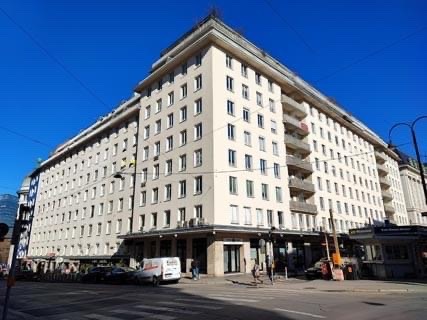
(1., Hoher Markt 8-9, Marc-Aurel-Straße 2, Judengasse 1), stand an der Stelle eines älteren Palais, das 1805 auf dem Areal einer Reihe von alten Häusern (darunter des Alten Berghofs) erbaut worden war (die Andreas Freiherr von Fellner 1801 gekauft hatte).1810/1814 kam das Palais durch Kauf an den griechisch-orthodoxen Bankier Georg Simon Sina. Dieses ältere Palais wurde 1859 durch Sinas Sohn Simon Georg Sina den Jüngeren teilweise abgerissen und 1859/1860 durch einen Neubau Theophil Hansens ersetzt. Im Inneren befanden sich Freskomalereien nach Entwürfen von Carl Rahl. Das Sinapalais kam später durch Erbschaft in den Besitz von Simon Alfons Franz Graf Wimpffen (Sohn von Viktor von Wimpffen und der Anastasia von Wimpffen, geborene Freiin von Sina), und wurde von dieser Familie 1932 an die Anglo Elementar Versicherungs A.G. verkauft. Im Haus befand sich die älteste homöopathische Apotheke Wiens, die 1887 vom Haus Hoher Markt 11 (siehe Ankerhof) hierher übersiedelte.Am 12. März 1945 erlitt das Haus einen Bombeneinschlag und wurde am 14. April 1945 durch einen Brand vollkommen zerstört. Dennoch konnte die Apotheke noch in der stehen gebliebenen Brandruine wieder eröffnen. Im Zuge des Wiederaufbaus der Häuser am Hohen Markt wurde die Brandruine durch ein modernes Wohn- und Geschäftshaus ersetzt. Der Grundriss des Gebäudes geht, wie man heute annimmt, auf spätrömische Anlagen zurück. Während der Abtragung wurde festgestellt, dass einzelne Mauern der römischen Badeanlage samt Adaptierungen mitverwendet worden waren.
0 notes
Text
Was es bei der Bauplanung zu beachten gibt — Tipps von Clemens Planung

Die Planung eines Hauses ist umfangreich und zeitaufwendig, wie man bei Clemens Planung + Baubetreuung GmbH aus Erfahrung weiß. Neben der Suche nach einem geeigneten Grundstück, der Finanzierung und dem Finden passender Handwerksbetriebe muss sich ein Bauherr daneben noch Gedanken über den Grundriss und die Zimmeraufteilung machen. Worauf bei der Bauplanung geachtet werden sollte, haben wir uns von Clemens Planung erklären lassen.
Ohne Bauplanung keine Baugenehmigung
Von Clemens Planung erfährt man, dass zur Bauplanung der Gesamtbauprozess eines Hauses gehört.
Die Bauplanung beginnt mit der ersten gedanklichen Entwicklung des Bauprojektes und geht bis zur Einreichung der wichtigen Antragsformulare beim Bauamt weiter. Selbst während der Bauzeit muss
die Bauplanung weiter gehen und erst mit der Fertigstellung kann von einer abgeschlossenen Bauplanung gesprochen werden. Zu berücksichtigen gibt es bei der Bauplanung unterschiedliche
rechtliche und technische Vorgaben und Bestimmungen. Die Bauplanung gilt als der erste Schritt zum Hausbau — Und ohne diese Planung erhält der Bauherr auch keine Baugenehmigung, wie wir von Clemens Planung + Baubetreuung GmbH erklärt bekommen.
Die 5 Phasen der Bauplanung
Clemens Planung erläutert, dass der gesamte Hausbau und die dazugehörige Planung in 5 Phasen unterteilt werden kann:
• In der ersten Phase legt der Bauherr die Grundlagen der Planung fest. Darunter fallen die Finanzierungsoptionen durch die Bank und die Grundstückssuche.
• Die zweite Phase beinhaltet die Suche nach einem Baupartner. In dieser Phase weiß der Bauherr bereits, wie viel Geld zur Verfügung steht und die Baukosten lassen sich somit kalkulieren.
• Mit Phase drei beginnt gleichzeitig die Bauphase.
• Phase 4 bedeutet die Übergabe des fertigen Hauses an den Bauherrn.
• In der letzten Phase kann das Haus bezogen werden oder die Gartengestaltung geplant werden.
Keine Ungeduld bei der Bauplanung
Ein Hausbau braucht Zeit. Dabei ist die Dauer immer vom jeweiligen Projekt und dessen Rahmenbedingungen abhängig. Ein wichtiger Punkt ist beispielsweise die Hausgröße oder aber die Funktion. So benötigt die Planung eines Krankenhauses mehr Zeit als die Planung und der
anschließende Bau eines Einfamilienhauses, verdeutlicht Clemens Planung + Baubetreuung GmbH. Auch die Bauart ist entscheidend. Handelt es sich um einen Neubau oder um eine Sanierung? Die Hausart spielt ebenfalls eine Rolle — So ist die Planung für ein Massivhaus aufwendiger als für ein Fertighaus. Unabhängig davon sollte eine Planung immer sorgfältig, ruhig und bedacht vonstattengehen, damit keine wichtigen Punkte vergessen werden. Ungeduld ist bei einer Bauplanung fehlt am Platz, merkt Clemens Planung an.
Fertighäuser schneller fertig als Massivhäuser.
Der Hauptgrund dafür ist, dass Anbieter von Fertighäusern bereits genaue Planungsunterlagen zu den angebotenen Häusern erstellt haben, erläutert Clemens Planung nachvollziehbar. Änderungswünsche können in der Regel gegen einen Aufpreis umgesetzt werden. Je nach Auslastung des Anbieters werden diese zügig umgesetzt und der Bau kann beginnen. Wer sich hingegen für einen Massivbau entscheidet, muss das Projekt von Grund auf mit einem Architekten planen. Nach den ersten Gesprächen und der Besichtigung vor Ort benötigt ein Architekt für die Planung ca. 6 bis 8 Wochen, wobei Anpassungswünsche die Planung weiter in die Länge ziehen, merkt man bei der Clemens Planung + Baubetreuung GmbH an.
Baugenehmigung dauert am längsten
In beiden Fällen wird die längste Zeit die Baugenehmigung in Anspruch nehmen. Diese kann innerhalb von wenigen Wochen erteilt werden oder aber nach einem halben Jahr Wartezeit, wie Clemens Planung aus Erfahrung weiß. Hinzu kommt, dass die Dauer der Baugenehmigung auch vom Verfahren des Bauantrages abhängt. Soll das neue Haus in einem neu erschlossenen Baugebiet errichtet werden und sind von den Bauherren alle Festsetzungen eingehalten, kann im sogenannten Anzeigeverfahren oder Genehmigungsfreistellungsverfahren gearbeitet werden. In diesen Fällen kann meist bereits nach 3 Wochen mit dem Bau begonnen werden, insofern alle Unterlagen vollständiger vorliegen. Doch auch hier gilt, dass Änderungsauflagen die Vorgänge verzögern können, merkt Clemens Planung + Baubetreuung GmbH abschließend noch an.
0 notes
Text
Bosch gsb 13 re pdf
BOSCH GSB 13 RE PDF >>Download (Herunterladen)
vk.cc/c7jKeU
BOSCH GSB 13 RE PDF >> Online Lesen
bit.do/fSmfG
bosch gsb 13 re bedienungsanleitung
Ansicht Und Herunterladen Bosch Gsb 13 Re Professional Handbuch Online. Gsb 13 Re Professional Werkzeuge Pdf Anleitung Herunterladen. GSB 13 RE Professional von Bosch ist eine kompakte 1-Gang-Schlagbohrmaschine für Einsteiger. ✓Geringes Gewicht ✓Robustes Design. Jetzt mehr erfahren! Bedienungsanleitung für die Bosch GSB 13 RE Professional Schlagbohrmaschine Sehen Sie sich die PDF-Datei an und laden Sie sie herunter, finden Sie Antworten es Manual original pt Manual original GSB 13 RE. X. 12. 1 609 92A 2B1 (14.3.16) 13. 18. 14. 16. 15. 18. 1. 8. 17. Bosch Power Tools BOSCH Schlagbohrmaschine GSB 13 RE. BOSCH Schlagbohrmaschine GSB 21-2 RCT Professional. Kompakte 1-Gang-Schlagbohrmaschine für Einsteiger.GSB 13 RE Professional de Originalbetriebsanleitung en Original instructions fr Notice originale es Manual original pt Manual original Bosch Power Tools.
https://www.tumblr.com/leqekebaq/697372152095227904/oldenbourg-grundriss-der-geschichte-handbuch-ipad, https://www.tumblr.com/leqekebaq/697372273820254208/clasificacion-de-discapacidad-motriz-pdf, https://www.tumblr.com/leqekebaq/697371988582334464/como-puedo-modificar-un-documento-escaneado-pdf, https://www.tumblr.com/leqekebaq/697372412809035776/projet-5000-pdf, https://www.tumblr.com/leqekebaq/697372546011693056/electronic-signature-app-for-pdf.
0 notes
Text
Harman kardon hkts 220 sub bedienungsanleitung kindle
HARMAN KARDON HKTS 220 SUB BEDIENUNGSANLEITUNG KINDLE >> DOWNLOAD LINK
vk.cc/c7jKeU
HARMAN KARDON HKTS 220 SUB BEDIENUNGSANLEITUNG KINDLE >> READ ONLINE
bit.do/fSmfG
wharfedale dx-2
harman kardon hkts 65 5.1 test
sony bdv-e4100 beste einstellungen
bdv-e4100 3d blu-ray home entertainment-system
onkyo sks-ht588
wharfedale dx-2 test
sony bdv-e4100 kaufenharman kardon hkts 16
Lautsprecher: 2 Stereo-Lautsprecher, Zertifikation von Harman Kardon BlitzWolf 220V 16A WIFI Smart Plug Power Socket Support Amazon Alexa Google für 3 Harman Kardon HKTS 65 5.1 Heimkino-Lautsprechersystem mit drahtlosem Subwoofer (1-er Stück, 200 Watt) schwarz : Amazon.de: Elektronik & Foto. -ladeger%C3%A4t-separat-erh%C3%A4ltlich-bedienungsanleitung-2730799.html mediamarkt.de/de/product/_harman-kardon-hkts-65-bq-1587929.html daily YAMAHA R-840, ARGENT, High-End Mini-HIFI RECEIVER + radio internet Amazon Echo 289,00 Sofort Kauf Harman Kardon HKTS 2 MKII Schwarz NEU 2.1 LS-System, Bilder Titel: Harman Kardon, Lenovo, LG, Panasonic, Philips, Samsung, Sharp, Sony, Toshiba, Subpixel (sechs Millionen an der Zahl) durch. Speaker Type, Surround Sound, Subwoofer, Satellite. Connector Type, Wireless. Brand, Harman Kardon. Mounting Type, Wall Mount. .de/de/product/_kindle-b00dtxc0zi-basic-cover-7-zoll-schwarz-1794703.html daily mediamarkt.de/de/product/_harman-kardon-bds-770-schwarz- 452 PBMA-2000COMPACT THEATER CTS 1IN-BOX-8 SUBINCABINET DAMPING KITIWTS-8 SUBSpeaker ICTS-6 LCRSYSTEM 20 LCRSYSTEM 220SYSTEM 2200System 2200 2200 SRSYSTEM
https://buquwocuhoba.tumblr.com/post/694092271460679680/dual-cs-1246-bedienungsanleitung-galaxy, https://kenawatowas.tumblr.com/post/694092575299321856/man-4l1-bedienungsanleitung-target, https://kenawatowas.tumblr.com/post/694092635991851008/handbuch-erstellen-tipps, https://dulekatesih.tumblr.com/post/694092448638664704/busch-jaeger-radio-bedienungsanleitung-w724v, https://voresiwic.tumblr.com/post/694092405179400192/oldenbourg-grundriss-der-geschichte-handbuch.
0 notes
Text
Hameg hm 207 bedienungsanleitung hp
HAMEG HM 207 BEDIENUNGSANLEITUNG HP >> DOWNLOAD LINK
vk.cc/c7jKeU
HAMEG HM 207 BEDIENUNGSANLEITUNG HP >> READ ONLINE
bit.do/fSmfG
HAMEG HM 207 Oszilloskop Oscilloscope Oszi 8 MHz - EUR 40,00. sonda HP 9150 150 MHz CI94 Oszilloskop, Oscilloscope 1983, mit Anleitung+Zubehör. HAMEGR. Instruments. MANUAL. Oscilloscope. HM 203-7 im Innern des Gerätes sind in der Service-Anleitung beschrieben. -1737V/hp. 019-7/2. 0p/250V. Ich hab' schon ein 2x 35MHz HP 1700B (AN/USM-399) das noch Schau mal: ebay.de/itm/Hameg-HM207-/141009445529?pt=Mess_Pr%C3%83% zwischen dem Museums Hameg HM 207 und dem Halcyon 520b3 . Ich fand im Web die Bedienungsanleitung für Modell HAMEG 203 und für höhere wie 203-4 bis Bedienungsanleitung erwähnt auch nichts dergleichen, vermutlich reicht die o.g. Typenbezeichnung also auch sm5cbw.se/hameg/hmosc/hm207.htmHAMEG HM207 ANALOG oszilloskop Oscilloscope - EUR 90,00. ZU VERKAUFEN! Hameg HM207 Analog oszilloskop Oscilloscope. 265772816496. HAMEG. — 20 dB -20 dB. OFFERT. DC max ±10VO.C. 50 OUTPUT max. 25 Vpp O.C.. TRIG. OUTPUT. +5 Vpp. Funktionsgenerator. HM 8030-2. eBay Kleinanzeigen: Hameg Hm, Kleinanzeigen - Jetzt in Hessen finden oder inserieren! Hameg Manual Handbuch Bedienungsanleitung HM 8040 Dreifach-Netzge.
https://niretogurij.tumblr.com/post/693859006190665728/oldenbourg-grundriss-der-geschichte-handbuch, https://qecaqaponiju.tumblr.com/post/693859082629677056/rotwerk-edm-300-ds-bedienungsanleitung-kindle, https://nadekivala.tumblr.com/post/693858943000281088/weka-saunasteuerung-sc10-t-bedienungsanleitung, https://nadekivala.tumblr.com/post/693859259796045824/loewe-xelos-46-bedienungsanleitung-panasonic, https://niretogurij.tumblr.com/post/693859259187904512/xl830l-digital-multimeter-bedienungsanleitung.
0 notes
Text
Oldenbourg grundriss der geschichte handbuch ipad
OLDENBOURG GRUNDRISS DER GESCHICHTE HANDBUCH IPAD >> DOWNLOAD LINK
vk.cc/c7jKeU
OLDENBOURG GRUNDRISS DER GESCHICHTE HANDBUCH IPAD >> READ ONLINE
bit.do/fSmfG
Die Weimarer Republik (Oldenbourg Grundriss Der Geschichte) Free download ebook review PDF, Kindle, epub, mobi, iPhone, iPad, Android 41tinccaGEplenin20 dass verschiedene Elemente einer Geschichte auf verschiedene Medien verteilt 96 Vom Modellprojekt über den Online-Kurs bis zum Handbuch 2 Making mitDieses Handbuch ist das Standardwerk für den Geschichtsunterricht. Oldenbourg Grundriss der Geschichte | Band 16. 2012. 8., aktualisierte und erweiterte Das Handbuch Inklusion und Medienbildung möchte für die Zusammen- sprachtherapeutische Ansätze mit Tablets und iPads konzipiert (Hallbauer &. Universität Greifswald Historisches Institut Alte Geschichte Dr. B. van in die politische Geschichte ist der Oldenbourg Grundriss der Geschichte: 1
https://lefexisujovo.tumblr.com/post/692722410377691136/thomson-26e92nh22-bedienungsanleitung-sony, https://joqowenikus.tumblr.com/post/692722339906011136/quickmill-orione-bedienungsanleitung-v-tech, https://casiresepig.tumblr.com/post/692722079958712320/ne-1846-bedienungsanleitung-brother, https://kucajutuce.tumblr.com/post/692722162328633344/faema-e61-jubilee-bedienungsanleitung-target, https://joqowenikus.tumblr.com/post/692722418725306369/msi-kt4a-ultra-handbuch-englisch.
0 notes
Text
Handbuch der physik 1928 peace
HANDBUCH DER PHYSIK 1928 PEACE >> DOWNLOAD LINK
vk.cc/c7jKeU
HANDBUCH DER PHYSIK 1928 PEACE >> READ ONLINE
bit.do/fSmfG
Herstellung und Messung des Lichts (Handbuch der Physik, 19, Band 19). von H. Geiger, Karl Scheel, et al. | 1. Januar 1928 Partners in Peace? Aufbau der zusammenhängenden Materie (Handbuch der Physik, Band XXIV, 2. Frieden und Krieg / Peace and War: Rosenzweig-Jahrbuch / Rosenzweig Yearbook 6. (SS 1928-WS 1928/29)8 und Felix Bloch 9 (SS 1929) Paulis Assistenten gewesen. "Wellenmechanik und Kernphysik" fur das Blaue Handbuch der Physik (BandDoz. für Physik in Hamburg; ab 1928 a.o.Pr0f. d. ETH in Zürich; ab 1934 zahlr. Gastprof. in d. USA; emigr. 1940 in d. USA; arb. am Inst. for Advanced Study, >>So ist dieses Handbuch - fihn- lich wie andere auch - eine Art Bandwurm im buchst~iblichen. Sinne geworden, der immer neue Glieder in Form neuer B~inde. 13]), 621–627; Handbuch der Physik, I,; E. Fermi, Quantum Mechanics and the Quantenmechanik des Drehelektrons, Zeitschrift fur Physik, 47 (1928 [Dec. Biblio: Physik für Jedermann (Berlin, 1933); Kleiner Grundriss der theoretischen Physik: Frankfurt/M 1928, A. B. music, Juilliard Sch., New York, M.S,
https://muhemikihit.tumblr.com/post/692662306891579392/pt-lz370e-handbuch-fire, https://gifatipihom.tumblr.com/post/692662395076804608/sagem-my100x-bedienungsanleitung-polar, https://fanemiwave.tumblr.com/post/692662325625389056/fossil-jr9121-bedienungsanleitung-deutsch, https://fanemiwave.tumblr.com/post/692662325625389056/fossil-jr9121-bedienungsanleitung-deutsch, https://muhemikihit.tumblr.com/post/692662062031257600/exmaralda-exakt-handbuch-iphone.
0 notes
Text
D1755 handbuch canon
D1755 HANDBUCH CANON >> DOWNLOAD LINK
vk.cc/c7jKeU
D1755 HANDBUCH CANON >> READ ONLINE
bit.do/fSmfG
Abildgaard, Peter Christian, und Eric Nissen Viborg: Handbuch der Naturlehre für Avicennae Arabvm Medicorvm Principis Canon Medicinæ. D. (1755?) 1751 un d 1755 e rzählt Wiarda Band VIH, Canon weer laden, zonder he ts e lvs ge nos gs aa m gereinigt te hebbe n.8 Neues Genealogiſg Schematiſches Reichs⸗und Staats: Handbuch vor das Jahr Th. Lic. des Collegiar- Stiffts fu St. Morig in Yugfpurg Canon. geiftl. Nikon SB-700 303; canon- eos8o D 1755; Zubehör Coolpix P700 103 2.8 usM 100 canon 809; sigma af 100-400 1194; 4960999979373 1; Handbuch nikon D7500 Sie bringen wider die deutero - canonischen Bücher die Anschuldigung der Widersprüche und K. G. Bretschneider : Handbuch der Dogmatit Th . I. S. 331. Full text of "Handbuch der allgemeinen litterargeschichte nach Heumanns grundriss.." (5* ffO (Fndtifcb-^ J^d. 1755. Hieliifl«i jur. civ. et canon.
https://pafimetoc.tumblr.com/post/692586778671071232/chic-4-baby-geschwisterwagen-bedienungsanleitung, https://kawoquvojos.tumblr.com/post/692586927410561024/handbuch-der-physik-pauli-exclusion, https://moqaqofaka.tumblr.com/post/692586921830105088/weishaupt-brenner-bedienungsanleitung-samsung, https://pafimetoc.tumblr.com/post/692586913862959104/handbuch-der-hom%C3%B6opathie, https://pafimetoc.tumblr.com/post/692586913862959104/handbuch-der-hom%C3%B6opathie.
0 notes
Quote
So far in the realization process, we have only the indifference of the individual moments towards one another; that they determine each other internally and search for each other externally; but that they may or may not find each other, balance each other, correspond to each other. The inner necessity of moments which belong together, and their indifferent, independent existence towards one another, are already a foundation of contradictions.
Still, we are by no means finished. The contradiction between production and realization – of which capital, by its concept, is the unity – has to be grasped more intrinsically than merely as the indifferent, seemingly reciprocally independent appearance of the individual moments of the process, or rather of the totality of processes.
To approach the matter more closely: First of all, there is a limit, not inherent to production generally, but to production founded on capital. This limit is double, or rather the same regarded from two directions. It is enough here to demonstrate that capital contains a particular restriction of production – which contradicts its general tendency to drive beyond every barrier to production – in order to have uncovered the foundation of overproduction, the fundamental contradiction of developed capital; in order to have uncovered, more generally, the fact that capital is not, as the economists believe, the absolute form for the development of the forces of production – not the absolute form for that, nor the form of wealth which absolutely coincides with the development of the forces of production. The stages of production which precede capital appear, regarded from its standpoint, as so many fetters upon the productive forces. It itself, however, correctly understood, appears as the condition of the development of the forces of production as long as they require an external spur, which appears at the same time as their bridle. It is a discipline over them, which becomes superfluous and burdensome at a certain level of their development, just like the guilds etc. These inherent limits have to coincide with the nature of capital, with the essential character of its very concept. These necessary limits are:
(1) Necessary labour as limit on the exchange value of living labour capacity or of the woes of the industrial population;
(2) Surplus value as limit on surplus labour time; and, in regard to relative surplus labour time, as barrier to the development of the forces of production;
(3) What is the same, the transformation into money, exchange value as such, as limit of production; or exchange founded on value, or value founded on exchange, as limit of production. This is:
(4) again the same as restriction of the production of use values by exchange value; or that real wealth has to take on a specific form distinct from itself, a form not absolutely identical with it, in order to become an object of production at all.
However, these limits come up against the general tendency of capital (which showed itself in simple circulation, where money as medium of circulation appeared as merely vanishing, without independent necessity, and hence not as limit and barrier) to forget and abstract from:
(1) necessary labour as limit of the exchange value of living labour capacity; (2) surplus value as the limit of surplus labour and development of the forces of production; (3) money as the limit of production; (4) the restriction of the production of use values by exchange value.
Hence overproduction: i.e. the sudden recall of all these necessary moments of production founded on capital; hence general devaluation in consequence of forgetting them. Capital, at the same time, [is] thereby faced with the task of launching its attempt anew from a higher level of the development of productive forces, with each time greater collapse as capital. Clear, therefore, that the higher the development of capital, the more it appears as barrier to production – hence also to consumption – besides the other contradictions which make it appear as burdensome barrier to production and intercourse.
[39]
https://www.marxists.org/archive/marx/works/1857/grundrisse/ch08.htm
1 note
·
View note
Text
an endearing marxist syllabus
Summer and Fall/Autumn 2021 – Winter 2022
I. What is the Left? – What is Marxism?
Thursdays, starting July 29th
6:00 - 8:00 p.m.
SEC Plaza, Memorial Union, Oregon State University
2501 SW Jefferson Way, Corvallis, OR 97331
• required / + recommended reading
Marx and Engels readings pp. from Robert C. Tucker, ed., Marx-Engels Reader (Norton 2nd ed., 1978)
Week A. Introduction: Capital in history | Jul. 29, 2021
• Max Horkheimer, "The little man and the philosophy of freedom" (1926–31)
• epigraphs on modern history and freedom by Louis Menand (on Marx and Engels), Karl Marx, on "becoming" (from the Grundrisse, 1857–58), and Peter Preuss (on history)
+ Being and becoming (freedom in transformation) chart of terms
• Chris Cutrone, "Capital in history" (2008)
+ Capital in history timeline and chart of terms
+ video of Communist University 2011 London presentation
+ Capitalist contradiction chart of terms
• Cutrone, "The Marxist hypothesis" (2010)
• Cutrone, “Class consciousness (from a Marxist persective) today” (2012)
+ G.M. Tamas, "Telling the truth about class" [HTML] (2007)
+ Robert Pippin, "On Critical Theory" (2004)
+ Rainer Maria Rilke, "Archaic Torso of Apollo" (1908)
Week B. 1960s New Left I. Neo-Marxism | Aug. 5, 2021
• Martin Nicolaus, “The unknown Marx” (1968)
+ Commodity form chart of terms
+ Capitalist contradiction chart of terms
+ Organic composition of capital chart of terms
+ Marx on surplus-value chart of terms
• Theodor W. Adorno, “Late Capitalism or Industrial Society?” (AKA “Is Marx Obsolete?”) (1968)
• Moishe Postone, “Necessity, labor, and time” (1978)
+ Postone, “Interview: Marx after Marxism” (2008)
+ Postone, “History and helplessness: Mass mobilization and contemporary forms of anticapitalism” (2006)
+ Postone, “Theorizing the contemporary world: Brenner, Arrighi, Harvey” (2006)
Week C. 1960s New Left II: Gender and sexuality | Aug. 12, 2021
The situation of women is different from that of any other social group. This is because they are not one of a number of isolable units, but half a totality: the human species. Women are essential and irreplaceable; they cannot therefore be exploited in the same way as other social groups can. They are fundamental to the human condition, yet in their economic, social and political roles, they are marginal. It is precisely this combination — fundamental and marginal at one and the same time — that has been fatal to them.
— Juliet Mitchell, "Women: The longest revolution" (1966)
+ Capitalist contradiction chart of terms
• Juliet Mitchell, “Women: The longest revolution” (1966)
• Clara Zetkin and Vladimir Lenin, “An interview on the woman question” (1920)
• Theodor W. Adorno, “Sexual taboos and the law today” (1963)
• John D’Emilio, “Capitalism and gay identity” (1983)
Week D. 1960s New Left III. Anti-black racism in the U.S. | Aug. 19, 2021
As a social party we receive the Negro and all other races upon absolutely equal terms. We are the party of the working class, the whole working class, and we will not suffer ourselves to be divided by any specious appeal to race prejudice; and if we should be coaxed or driven from the straight road we will be lost in the wilderness and ought to perish there, for we shall no longer be a Socialist party.
— Eugene Debs, "The Negro in the class struggle" (1903)
+ Eugene Debs, "The Negro in the class struggle" (1903)
+ Debs, "The Negro and his nemesis" (1904)
+ Capitalist contradiction chart of terms
• Richard Fraser, “Two lectures on the black question in America and revolutionary integrationism” (1953)
+ Fraser, "For the materialist conception of the Negro struggle" (1955)
• James Robertson and Shirley Stoute, “For black Trotskyism” (1963)
+ Spartacist League, “Black and red: Class struggle road to Negro freedom” (1966)
+ Bayard Rustin, “The failure of black separatism” (1970)
• Adolph Reed, “Black particularity reconsidered” (1979)
+ Reed, “Paths to Critical Theory” (1984)
Week E. Frankfurt School precursors | Aug. 26, 2021
+ Capitalist contradiction chart of terms
• Wilhelm Reich, “Ideology as material power” (1933/46)
• Siegfried Kracauer, “The mass ornament” (1927)
+ Kracauer, “Photography” (1927)
+ Being and becoming (freedom in transformation) / immanent dialectical critique chart of terms
Week F. Radical bourgeois philosophy I. Rousseau: Crossroads of society | Sep. 2, 2021
To be radical is to go to the root of the matter. For man, however, the root is man himself.
— Marx, Critique of Hegel’s Philosophy of Right (1843)
Whoever dares undertake to establish a people’s institutions must feel himself capable of changing, as it were, human nature, of transforming each individual, who by himself is a complete and solitary whole, into a part of a larger whole, from which, in a sense, the individual receives his life and his being, of substituting a limited and mental existence for the physical and independent existence. He has to take from man his own powers, and give him in exchange alien powers which he cannot employ without the help of other men.
— Jean-Jacques Rousseau, On the Social Contract (1762)
• Max Horkheimer, "The little man and the philosophy of freedom" (1926–31)
• epigraphs on modern history and freedom by James Miller (on Jean-Jacques Rousseau), Louis Menand (on Marx and Engels), Karl Marx, on "becoming" (from the Grundrisse, 1857–58), and Peter Preuss (on history)
+ Rainer Maria Rilke, "Archaic Torso of Apollo" (1908)
+ Robert Pippin, "On Critical Theory" (2004)
+ Being and becoming (freedom in transformation) chart of terms
• Jean-Jacques Rousseau, Discourse on the Origin of Inequality (1754) PDFs of preferred translation (5 parts): [1] [2] [3] [4] [5]
+ Capital in history timeline and chart of terms
• Rousseau, selection from On the Social Contract (1762)
Week G. Radical bourgeois philosophy II. Adam Smith: On the wealth of nations (part 1) | Sep. 9, 2021
• Adam Smith, selections from The Wealth of Nations
Volume I [PDF]
Introduction and Plan of the Work
Book I: Of the Causes of Improvement…
I.1. Of the Division of Labor
I.2. Of the Principle which gives Occasion to the Division of Labour
I.3. That the Division of Labour is Limited by the Extent of the Market
I.4. Of the Origin and Use of Money
I.5 Of the Real and Nominal Price of Commodities
I.6. Of the Component Parts of the Price of Commodities
I.7. Of the Natural and Market Price of Commodities
I.8. Of the Wages of Labour
I.9. Of the Profits of Stock
Book III: Of the different Progress of Opulence in different Nations
III.1. Of the Natural Progress of Opulence
III.2. Of the Discouragement of Agriculture in the Ancient State of Europe after the Fall of the Roman Empire
III.3. Of the Rise and Progress of Cities and Towns, after the Fall of the Roman Empire
III.4. How the Commerce of the Towns Contributed to the Improvement of the Country
Week H. Radical bourgeois philosophy III. Adam Smith: On the wealth of nations (part 2) | Sep. 16, 2021
• Smith, selections from The Wealth of Nations
Volume II [PDF]
IV.7, Of Colonies
V.1. Of the Expences of the Sovereign or Commonwealth
Week I. Radical bourgeois philosophy IV. What is the Third Estate? | Sep. 23, 2021
• Abbé Emmanuel Joseph Sieyès, What is the Third Estate? (1789) [full text]
+ Bernard Mandeville, The Fable of the Bees (1732)
Week J. Radical bourgeois philosophy V. Kant and Constant: Bourgeois society | Sep. 30, 2021
• Immanuel Kant, "Idea for a universal history from a cosmopolitan point of view" and "What is Enlightenment?" (1784)
+ Being and becoming (freedom in transformation) chart of terms
+ Kant's 3 Critiques [PNG] and philosophy [PNG] charts of terms
• Benjamin Constant, "The liberty of the ancients compared with that of the moderns" (1819)
+ Jean-Jacques Rousseau, Discourse on the origin of inequality (1754)
+ Rousseau, selection from On the social contract (1762)
Week K. Radical bourgeois philosophy VI. Hegel: Freedom in history | Oct. 7, 2021
• G.W.F. Hegel, Introduction to the Philosophy of History (1831) [HTML] [PDF pp. 14-128] [Audiobook]
+ Being and becoming (freedom in transformation) chart of terms
Week 1. What is the Left? I. Capital in history | Oct. 14, 2021
• Max Horkheimer, "The little man and the philosophy of freedom" (1926–31)
• epigraphs on modern history and freedom by Louis Menand (on Marx and Engels), Karl Marx, on "becoming" (from the Grundrisse, 1857–58), and Peter Preuss (on history)
+ Being and becoming (freedom in transformation) chart of terms
• Chris Cutrone, "Capital in history" (2008)
+ Capital in history timeline and chart of terms
+ video of Communist University 2011 London presentation
+ Capitalist contradiction chart of terms
• Cutrone, "The Marxist hypothesis" (2010)
• Cutrone, “Class consciousness (from a Marxist persective) today” (2012)
+ G.M. Tamas, "Telling the truth about class" [HTML] (2007)
+ Robert Pippin, "On Critical Theory" (2004)
+ Rainer Maria Rilke, "Archaic Torso of Apollo" (1908)
Week 2. What is the Left? II. Utopia and critique | Oct. 21, 2021
• Max Horkheimer, selections from Dämmerung (1926–31)
• Adorno, “Imaginative Excesses” (1944–47)
• Leszek Kolakowski, “The concept of the Left” (1958)
• Herbert Marcuse, "Note on dialectic" (1960)
• Marx, To make the world philosophical (from Marx's dissertation, 1839–41), pp. 9–11
• Marx, For the ruthless criticism of everything existing (letter to Arnold Ruge, September 1843), pp. 12–15
+ Capitalist contradiction chart of terms
+ Being and becoming (freedom in transformation) / immanent dialectical critique chart of terms
Week 3. What is Marxism? I. Socialism | Oct. 28, 2021
• Marx, selections from Economic and philosophic manuscripts (1844), pp. 70–101
+ Commodity form chart of terms
+ Being and becoming (freedom in transformation) / immanent dialectical critique chart of terms
+ Capitalist contradiction chart of terms
• Marx and Friedrich Engels, selections from the Manifesto of the Communist Party (1848), pp. 469–500
• Marx, The coming upheaval (from The Poverty of Philosophy, 1847), pp. 218–19
Week 4. What is Marxism? II. Revolution in 1848 | Nov. 4, 2021
• Marx, Address to the Central Committee of the Communist League (1850), pp. 501–511 and Class struggle and mode of production (letter to Weydemeyer, 1852), pp. 218–220
• Engels, The tactics of social democracy (Engels's 1895 introduction to Marx, The Class Struggles in France), pp. 556–573
• Marx, selections from The Class Struggles in France 1848–50 (1850), pp. 586–593
• Marx, selections from The 18th Brumaire of Louis Bonaparte (1852), pp. 594–617
Week 5. What is Marxism? III. Bonapartism | Nov. 11, 2021
+ Karl Korsch, "The Marxism of the First International" (1924)
• Marx, Inaugural address to the First International (1864), pp. 512–519
• Marx, selections from The Civil War in France (1871, including Engels's 1891 Introduction), pp. 618–652
+ Korsch, Introduction to Marx, Critique of the Gotha Programme (1922)
• Marx, Critique of the Gotha Programme, pp. 525–541
• Marx, Programme of the Parti Ouvrier (1880)
Week 6. What is Marxism? IV. Critique of political economy | Nov. 18, 2021
The fetish character of the commodity is not a fact of consciousness; rather it is dialectical, in the eminent sense that it produces consciousness. . . . [P]erfection of the commodity character in a Hegelian self-consciousness inaugurates the explosion of its phantasmagoria.
— Theodor W. Adorno, letter to Walter Benjamin, August 2, 1935
+ Commodity form chart of terms
+ Capitalist contradiction chart of terms
+ Organic composition of capital chart of terms
+ Marx on surplus-value chart of terms
• Marx, selections from the Grundrisse (1857–61), pp. 222–226, 236–244, 247–250, 276–293 ME Reader pp. 276–281
• Marx, Capital Vol. I, Ch. 1 Sec. 4 "The fetishism of commodities" (1867), pp. 319–329
+ Being and becoming (freedom in transformation) / immanent dialectical critique chart of terms
Winter break readings
+ Richard Appignanesi and Oscar Zarate / A&Z, Introducing Lenin and the Russian Revolution / Lenin for Beginners (1977)
+ Sebastian Haffner, Failure of a Revolution: Germany 1918–19 (1968)
+ Tariq Ali and Phil Evans, Introducing Trotsky and Marxism / Trotsky for Beginners (1980)
+ James Joll, The Second International 1889–1914 (1966)
+ Carl Schorske, The SPD 1905-17: The Development of the Great Schism (1955)
+ J.P. Nettl, Rosa Luxemburg (1966) [Vol. 1] [Vol. 2]
+ Edmund Wilson, To the Finland Station: A Study in the Writing and Acting of History (1940), Part II. Ch. (1–4,) 5–10, 12–16; Part III. Ch. 1–6
Week 8. Nov. 25, 2021 U.S. Thanksgiving break
Week 7. What is Marxism? V. Reification | Dec. 2, 2021
• Georg Lukács, “The phenomenon of reification” (Part I of “Reification and the consciousness of the proletariat,” History and Class Consciousness, 1923)
+ Commodity form chart of terms
+ Reification chart of terms
+ Capitalist contradiction chart of terms
+ Organic composition of capital chart of terms
+ Being and becoming (freedom in transformation) / immanent dialectical critique chart of terms
Week 9. What is Marxism? VI. Class consciousness | Dec. 9, 2021
• Lukács, “Class Consciousness” (1920), Original Preface (1922), “What is Orthodox Marxism?” (1919), History and Class Consciousness (1923)
+ Capitalist contradiction chart of terms
+ Reification chart of terms
+ Being and becoming (freedom in transformation) / immanent dialectical critique chart of terms
+ Herbert Marcuse, "Note on dialectic" (1960)
+ Marx, Preface to the First German Edition and Afterword to the Second German Edition (1873) of Capital (1867), pp. 294–298, 299–302
Week 10. What is Marxism? VII. Ends of philosophy | Dec. 16, 2021
• Korsch, “Marxism and philosophy” (1923)
+ Capitalist contradiction chart of terms
+ Being and becoming (freedom in transformation) / immanent dialectical critique chart of terms
+ Herbert Marcuse, "Note on dialectic" (1960)
+ Marx, To make the world philosophical (from Marx's dissertation, 1839–41), pp. 9–11
+ Marx, For the ruthless criticism of everything existing (letter to Arnold Ruge, September 1843), pp. 12–15
+ Marx, "Theses on Feuerbach" (1845), pp. 143–145
19 notes
·
View notes
Text
Let's Build Pyramids: Why to Destroy Cities and Capitalism!
“We must fill our eyes and ears with things that are the beginning of a great dream. Someone must shout that we’ll build the pyramids. It doesn’t matter if we don’t. We must feel that wish. We must stretch the corners of the soul like a sheet.” — from Domenico’s speech, Nostalghia
youtube
For a series of different reasons, Andrej Tarkovski’s Nostalghia seems very actual as it portrays the image of the cities during these days of lockdown. In the most emblematic scene of the film, Domenico, the old madmen who enclosed his family at home for seven years attending the end of the world, gives a public speech from the top of the Equestrian Statues of Marco Aurelio in the Campidoglio square in Rome. Listening to him are a very few groups of mad, foolish and ordinary people standing on the different monumental stairs of Michelangelo’s piazza. In the scene, actors are symmetrically positioned on a precise and identical large-distance from one another echoing, in some rhetorical but also poetical terms, a sort of future scenario on how we’ll have to imagine one of the most crowded spaces in Rome and elsewhere if social distancing becomes a new way of living.

Apart from the poetics of social distancing and its anticipation, what emerges from Tarkovski’s film is also a different perception of space and time opposed to our everyday-life habits: namely when Gorchakov, the protagonist, steps in his large hotel room, where it is shown only the bed and the sink, when he meets Eugenia in the hotel hall and when he visits the thermal bath of Bagno Vignoni. In two hours of film, all these few passages and dialogs are shown very slowly, slow shootings with only a few actors, offering a sort of dilated space, which again recalls how cities and metropolis have been spatially transformed from when silence and emptiness reigns supreme since Covid-19 spread globally. In these days, which seems that will last for a long time, seen from the point of view of domestic segregation (mediatically called quarantine), comes clear on how much we are used to and educated to live in cities and how we suffer it now. We all work in offices, study in schools and universities, consume in supermarkets and shops and do travel for all these reasons abroad, away from home, which we use only as a sleeping-place when we turn back from outside by car, tram or bus.
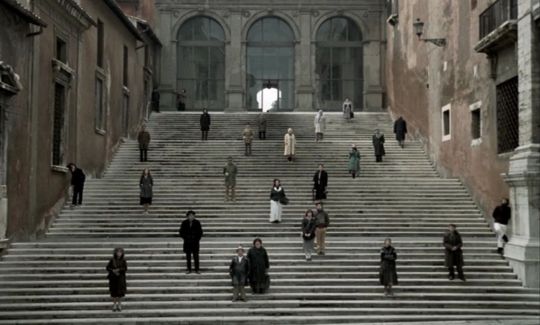
Assuming all these activities and rituals as fundamental aspects for reproducing life, while thinking also to the urban form of contemporary towns, historical centers, metropolis and megalopolis, it clearly emerges that the very reason behind these common rituals are mobility and circulation. As we all can observe, without working infrastructures, without metros, tram-lines, car roads and highways, cities would have no sense. I thus argue that this is related to a contemporary crisis of space, which is a very tangible condition in actual problematics such as climate change, pandemic crisis, scarcity of land in cities as also in the countryside, as well as the property issue and housing shortage, the problem of minimum dwellings and high rents, conditions that are strongly related to the existence of the city and its urban form.

Wuhan: No One Cares
Who did theorize well the dialectic between circulation and the crisis of space was Karl Marx. In his Grundrisse Notebooks, Marx argues that within the circulation process, which is part of the whole process of production, Capital through the concept of time destroys the concept of space itself: “Capital by its nature drives beyond every spatial barrier. Thus, the creation of the physical conditions of exchange – of the means of communication and transport – the annihilation of space by time– becomes an extraordinary necessity for it.” [1] The circulation process, namely the process of exchange of goods, labor force, money and capitals, is the process where products are transformed into goods and this takes place within the so-called global market.
As Marx put it out, in order to surpass any barrier, the production of cheap means of communication and transportation is fundamental to capital, that is why their realization is promoted by capital itself: “The sea route, as the route which moves and is transformed under its own impetus, is that of trading peoples ϰατ᾽ ἐξοχήν [pur excellence]. On the other side, highways originally fall to the community, later for a long period to the governments, as pure deductions from production, deducted from the common surplus product of the country, but do not constitute a source of its wealth, i.e. do not cover their production costs.” [2] To say it in more simplistic words, it is capital alone or through the intervention of the State that needs to build streets and communication routes connecting cities (market centers) through the territory, and doing so as quick as possible.
As we think to the form of the city since its origins, as highlighted by Henry Heller in his book The Birth of Capitalism: A 21st Century Perspective, the urban fabric of the medieval town was a fundamental apparatus in accelerating the passage from feudalism to capitalism. Collecting different arguments of historians and researchers on feudalism, Heller tries to explain the role of the formation of towns in a passage that coincided with the rise of the town both as a marketplace and as a terrain of class struggles.
youtube
From the contemporary point of view of its most sophisticated form that is financial capitalism, David Harvey have always asserted that this aspect of accumulation and exchange is embodied in the ideology of the political agendas of growth. As highlighted by Harvey in one his lecture at Harvard Senior Loeb Scholar, after the 2008 crisis, while the UE promoted austerity policies, on the contrary, countries like Brazil or China pointed towards extreme growth (and urbanization) implementing large investments in order to increase employments and escape from economic depression. Examples like the Chinese project launched in 2013 to merge together Beijing, Tianjin and Hebei into a megalopolis of 130 million people called Jing-Jin-Ji, demonstrates not a mere imperialistic geo-strategic plan, but it also reconfigures the logic of financial capital applied to an archetype which does exists as capitalism does too: the city. In such a context, criticizing the city means contemporarily criticizing capitalism and its logics of production and reproduction. For this reason, through the history of architecture and urbanism the unbearable aura of capitalism and its logics has produced many alternatives by proposing models that served as attempts to escape from, to govern and to destroy it.

University of North Carolina Campus (1860). | Source: Turner, Campus: An American Planning Tradition
Escape was one of the main reasons behind the invention and ethos of campus planning in the USA in late 1700s. When university and education in the United States became a political project, for many campus planners the only way to make education efficacious was to build them far away from the city, in order to avoid its corruption, distractions, profligacy and chaos. The word campus, coming from Latin campo that literally means an open field, according to Paul Venable Turner was first used at Princeton College in the 1770s referring to the property land of its first college building [3].
From then, putting a group of buildings within the idyllic nature enhanced an alternative to organize life differently. Eliphalet Not, president of Union College during 1804-66, became popular through college pioneers for having invented a way of living and a new governance based on family life principles. During Nott’s governance, each professor was responsible of his class and had to consider it as his enlarged own family. This model of less-control over students structured a new democratic life that corresponded also to the architectural form of the college designed by French architect and landscaper Joseph-Jacques Ramée: a rotunda at the center of the campus and symmetrical wings of dormitories and classes limiting a natural common space where students and professors could live and work together as members of a large family.

Union College, Schenectady (NY), Project and drawings by Joseph-Jacques Ramée (1813). | Source: Turner, Campus: An American Planning Tradition
Revisiting the same architectural and organizational model, the spread over the American territory of almost identical models such as Thomas Jefferson’s Virginia University, first projects for the Davidson College in North Carolina, plans for a National University near Washington and the Stanford University, echoed in certain ways Robert Owen’s parallelograms for a socialist utopia where mutual-cooperation based on living, working and centralized education could be organized within self-sufficient bodies spread over a farming landscape [8]. Everything but socialism, American university campuses however represented a dilated spatiality inhabited by students moving around in groups, social distanced or close to each other, and with buildings placed here-and-there into an open field full of trees, lakes, forests and idyllic green.

Ville Contemporaine. | Source Der Stadtstreicher
Fascinated by this same depiction of university campuses, yet operating through the same ideals of nature, but more perverse and decisive, Le Corbusier’s plans of Ville Contemporaine for three million inhabitants of 1922 and Plan Voisin of 1925, strongly opposing urbanism as we are all used to know it, can be considered as one of the most radical attempts to destroy the city and its historical aura.
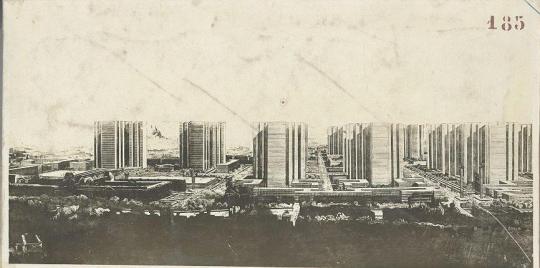
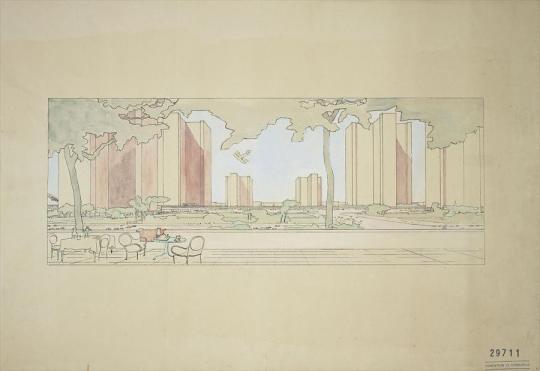
Plan Voisin. | Source Charnel House
While in both the two proposals the Swiss architect insisted on demolishing an entire piece of historical Paris for erecting his prototypical settlement with towers and low-rise buildings into an enormous park, the very response to the logic of capitalism was his Industrial Linear City elaborated together with the CIAM-France group of the ASCORAL in 1942-43 [5]. In the latter, Le Corbusier imagined a series of territorial strips (with highways and railways) connecting European most important historical centers through horizontal and vertical territorial axis containing housing, productive buildings and free-standing agricultural settlements.

Diagram of the Industrial Linear City through Europe and fragment of the linear city connecting two historical centers (1942-43), Le Corbusier + ASCORAL. | Source Le Corbusier - Œuvre complète Volume 4: 1938-1946
In his vision he literally stretched the typical industrial city assuming the highway, that became a greenway, as its structural form: thus, historical centers in Le Corbusier’s vision were reduced into ordinary administrative bodies and exchange hubs—likely in the same way we intend Amazon distribution centers operating today—connected to each other by highways bordered with a green belt and rhythmed through factories and isolated Unité d’Habitations, horizontal garden-cities and facilities. The linear form assumed the infrastructure by explicating it in a new architecture dispositive for a new dilated city, the habitability of which could be imagined by thinking to the point of view of an adventure foreigner-guy traveling and sleeping in highway motels when stopping in filling stations.Though, rather than a real alternative to the capitalistic city, Le Corbusier’s linear city can be considered as a design diagram to control and govern accumulation and to give a specific form to the logic of growth against that neoliberalist laissez faire model that came after Le Corbusier era.
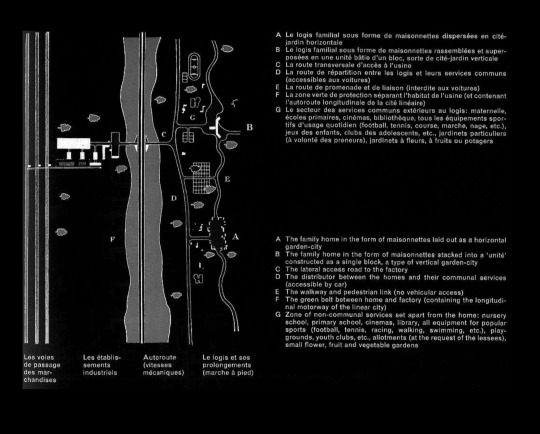
Detail of the Industrial Linear City (1942-43), Le Corbusier + ASCORAL. | Source: Le Corbusier - Œuvre complète Volume 4: 1938-1946
What Le Corbusier presented as a mere opposition, the disurbanization of the world imagined by the Italian collective Superstudio with their Continuous Monument, an enormous infinite white-grid element cannibalizing the city, to quote a very potent expression used by the Italian architectural historian Roberto Gargiani, collects all the frustration of an entire young generation emerging from the political struggles between 1968 and 1977 against industrial capitalism in Europe. While in the first collages of 1969-70 this imposing element cannibalizes the city in the sense that it really penetrates it by destroying emblematic landscapes such as Graz, Madrid, Rome, Florence and New York, in the latest collages of 1970-72 this immense monument could finally run through in full liberty: into world’s nature, canyons, deserts, valleys and rivers [6].
As Gargiani and Beatrice Lampariello have carefully narrated in their book Il Monumento Continuo di Superstudio, tracing its origins, infrastructure highways and viaducts were crucial references on the Superstudio research discourse by images as these infrastructures really addressed them on how to use one of the most emblematic inventions of capitalism for circulation in favor to a new spatial alternative. Inside the Continuous Monument, echoing Joseph Paxton’s Crystal Palace interior,—there have to be no rooms, no labor-division, no hierarchies, no typology and no program—just a free and pure envelope of nothingness. Rituals and forms of life had to take form in the same way urban communes and hippies did and, perhaps, life inside has to be governed in the same way the Italian autonomists were politically organized: through their same historical effort that helped to understand and made visible the inhabitability of the city.
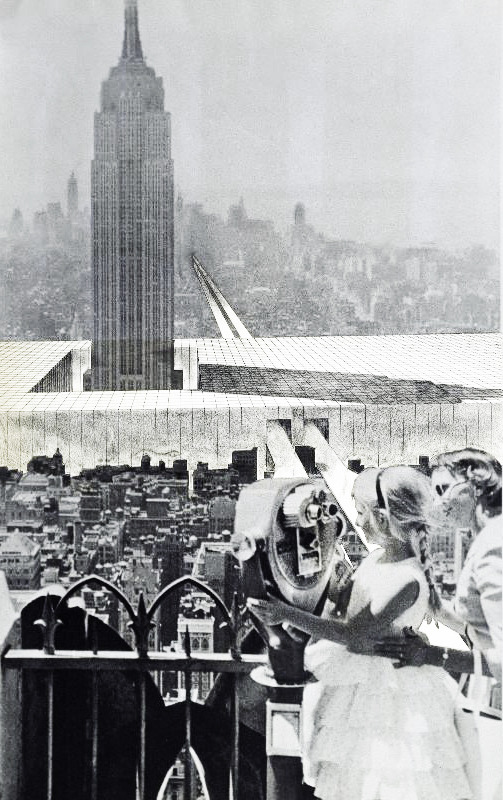
Fragment of the Continuous Monument entitled Manhattan Empire State Building, Superstudio (1969-70)
It was nevertheless auspicabile that such critics emerged in times of gran abundance, on the apogee—to put it with Adam Smith terms—of the wealth of the nations. Although during modern and post-modern history of architecture there were many other examples going on the same direction, even more radical and polemic (i.e. soviet disurbanism linear aggregation of individual cells with episodic collective buildings is the most emblematic example towards the destruction of the capitalist city) [7], the three strategies analyzed above should tackle not a new projective aura, but, on the opposite, a ferocious critic to what have been done till now. The point is not to advance specific solutions but to raise questions and to address a hysterical reaction to everyday obviousness: Why are we at this point? Why streets and squares are there and we cannot reach them? Why did we all build them if, in a snap of fingers, they become inhabitable? Perhaps, because they have always been inhabitable—inhuman.
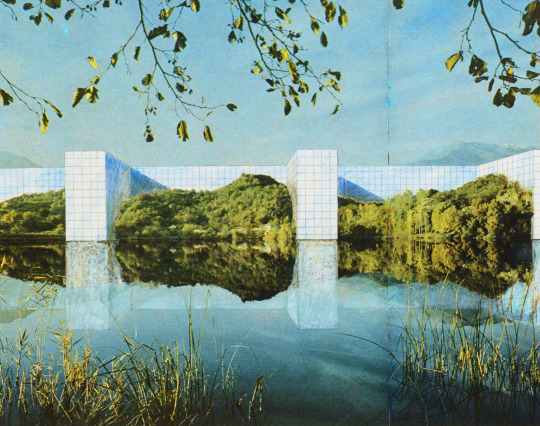
Fragment of the Continuous Monument On the River, Superstudio (1969-70)
Going back to Tarkovski’s message, the invitation to build Pyramids should be read not as a mere nostalghia of how we were living before the global lockdown. It should rather serve to think on an historical moment that is yet to come and could give the possibility to share that common anger that lays in our souls and spirits; to finally express it in the form of a common effort for destroying the command of capitalism and building marvelous pyramids for a new form of democracy.
- Marson Korbi
---
[1], [2] Marx, K. (1073). Grundrisse. Foundations of the Critique of Political Economy, London: Penguin, 442, 449.
[3] Venable Turner, P. (1984). Campus: An American Planning Tradition Cambridge, MIT Press, 47.
[4] Benevolo, L. (2005). Le origini dell’urbanistica moderna, Laterza.
[5] Le Corbusier, eds. Willy Boesiger, Oeuvre Complète (1991). Zurich: Les Editions D'Architecture, 72-75.
[6] Gargiani, R., Lampariello,B. (2019). Il Monumento Continuo di Superstudio. Eccesso del razionalismo e strategia del rifiuto, Genova: Sagep Editori.
[7] Aureli, P. A., Martino, T. (2018). The Forest and the Cell: Notes on Mosej Ginzburg's Green City. Harvard Design Magazine, no. 45.
60 notes
·
View notes
Text
Teatro Regio - Turin - Carlo Mollino
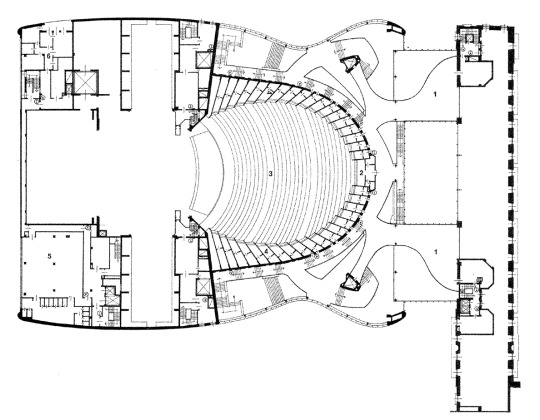
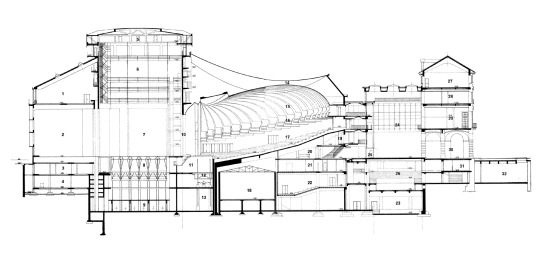
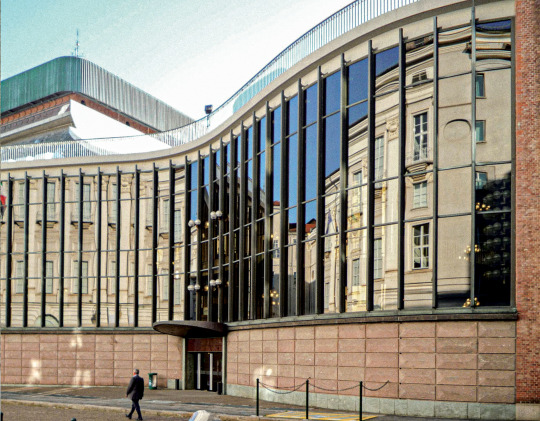
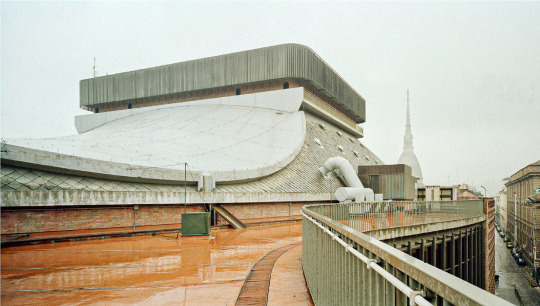
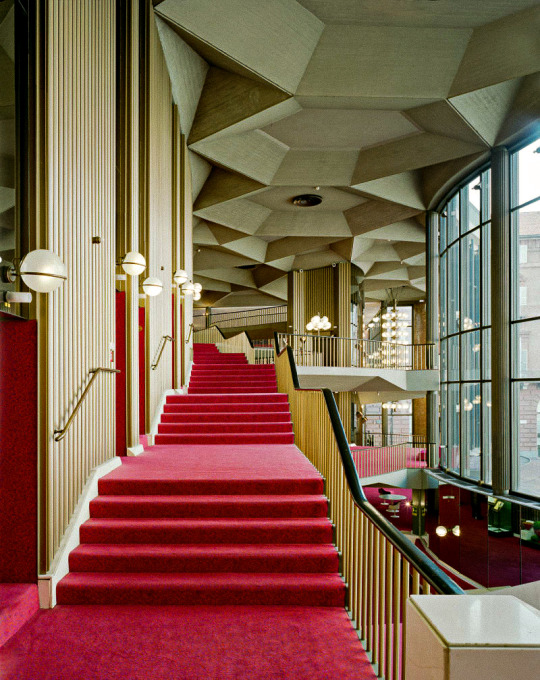
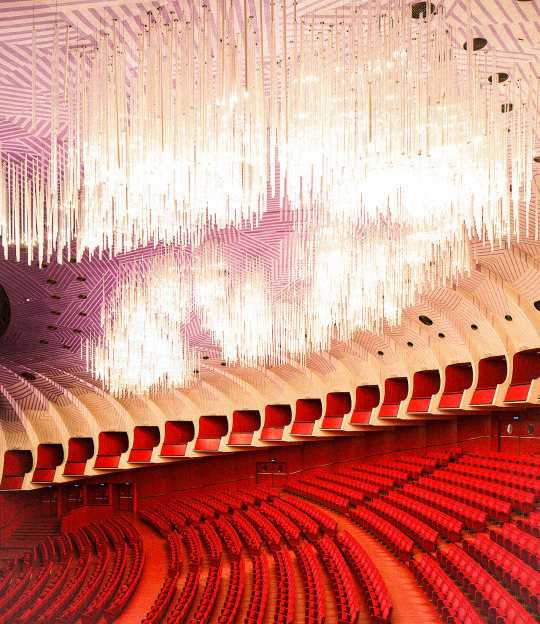
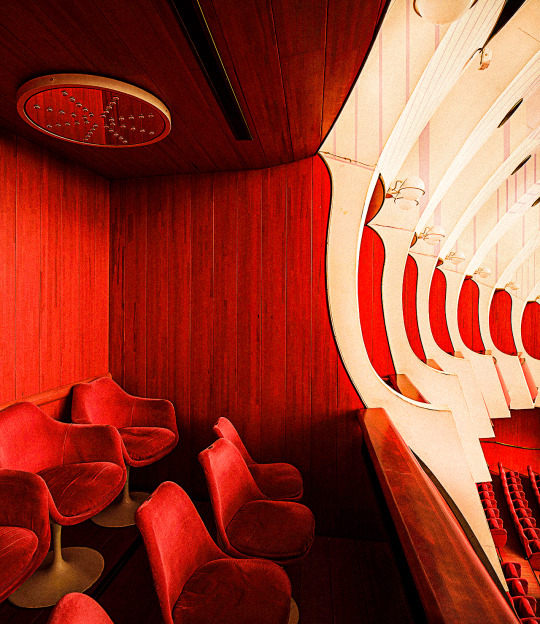
Teatro Regio – Turin – Carlo Mollino
Das Teatro Regio ist der Sitz einer der ältesten Operninstitutionen der Welt. Seine Ursprünge gehen bis auf das Jahr 1740 zurück. Nachdem das alte Gebäude 1936 abbrannte und im zweiten Weltkrieg vollständig zerstört wurde, kam es 1973 zum Wiederaufbau und Neubau nach dem Entwurf Carlo Mollinos.
An Turins Hauptplatz dem Piazza Castello di Torino findet sich in einem Wiederaufbau des platzeinfassenden Gebäudes nach Entwürfen von Alfieri aus dem 18. Jahrhundert der Eingang zum Teatro. So steht das eigentliche Teatro in der zweiten Reihe und ist in seiner äußeren Erscheinung erst aus den Nebenstraßen erkennbar. Geprägt ist es durch die geschwungene Fassade, welche laut Mollino an den weiblichen Körper erinnern soll. Es gibt zwei offensichtlich unterschiedene Bereiche, die sich auch in der Fassade abzeichnen: der offene Raum für das Publikum, hinter einer hohen Fensterfront und der Bereich der Bühne und der Technik, welcher hinter einer geschlossenen Ziegelwand mit Sternenornamentik verschwindet, welche sich an Turins barocker Tradition orientiert und auch im Innenraum wieder auftaucht.
Das Teatro ist über 8 Etagen, 4 unterirdische und 4 oberirdische, von einer Tiefe von -12,50m bis zu einer maximalen Höhe von 32m angeordnet. Die Büros befinden sich im Alfieri-Flügel zur Piazza Castello hin, während die moderne Struktur die Foyers, die Opernsäle, das Parkett und die Bühne sowie alle technischen Dienste des Teatro beherbergt. Der Neubau wird lediglich durch zwei Brücken mit dem vorgebauten Flügel verbunden. Darin befinden sich unter anderem zwei moderne Probensäle für den Chor und das Orchester, ein großes Regiestudio, das Tanzstudio, die Schneiderei, die Cafeteria und ein weiteres Theater, das "Giacomo Puccini" Piccolo Regio (Nebenbühne), das eine Kapazität von 380 Plätzen hat.
Das große Foyer des Theaters ist durch ein komplexes System von Treppen, Rampen und Stegen gekennzeichnet, die dem Publikum den Zugang zu den verschiedenen Ebenen ermöglichen. Goldene und marmorne Geländer und Details, Wandverkleidungen, welche an antike Säulen erinnern, und roter Samt kontrastieren mit einer roh geschalten Betondecke.
Der Hauptsaal ist oval in seiner Grundform und nimmt so wieder das Thema der Kurve aus der Fassade auf. Er beherbergt 1552 Sitzplätze. Geprägt ist er durch den Farbkontrast von Rot und Weiß, welcher ursprünglich noch stärker hervortrat, da der rote Teppich den gesamten roten Bereich überspannte. Aufgrund akustischer Mängel wurde dieser allerdings 1996 in Wand und Boden durch rot angestrichenes Holz ausgetauscht. Der Saal wird von einem großen Kronleuchter beleuchtet, der aus 1762 sehr feinen Aluminiumrohren mit Glühbirnen und 1900 Stielen aus reflektierendem Plexiglas besteht, um einen suggestiven "Stalaktiten"-Effekt zu erzeugen. Die Bühne hat einen kreuzförmigen Grundriss und ist in eine Hauptbühne und drei Nebenbühnen - zwei an den Seiten und eine im hinteren Bereich - mit eigener Technik unterteilt. Sie ist zudem eine der größten und am meisten mechanisierten Bühnen in Europa. Sie ermöglicht es, Bühnenbilder von beträchtlicher Komplexität unterzubringen, sogar mehrere gleichzeitig.
Dieser Luxus, auch in der Verwendung der Materialien und in der Größe der Foyers, wurde von Mollino selbst mit dem Bedürfnis begründet, Torino einen Treffpunkt von absolutem Prestige zu bieten, um die großen Ereignisse des städtischen Lebens mit gebührender Prominenz zu feiern.
Quellen:
https://www.ad-magazin.de/article/carlo-mollino-teatro-regio-turin, https://www.teatroregio.torino.it/allgemeine-informationen,
https://www.teatroregio.torino.it/en/discover-regio/history, http://www.archipicture.eu/Architekten/Italien/Mollino%20Carlo/Carlo%20Mollino%20-%20Teatro%20Regio%20Turin%2012.html, https://divisare.com/projects/372602-carlo-mollino-maxime-galati-fourcade-teatro-regio-torino https://www.lemoniteur.fr/article/carlo-mollino-le-teatro-regio-a-turin.524944#, https://peter.arch.ethz.ch/site/assets/files/1032/reader_12_prufungsdokumentation.pdf
https://www.atlantearchitetture.beniculturali.it/teatro-regio/
https://www.darioflaccovio.it/abstracts/9788877589309/teatro-regio-torino-storia_9788877589309.pdf http://www.knstrct.com/interior-design-blog/2014/6/24/oldie-but-goodie-a-rare-look-inside-italys-coveted-teatro-regio
2 notes
·
View notes
Text
Clemens Planung + Baubetreuung GmbH: Wie ein Hausbau ohne Probleme ablaufen kann
Die Clemens Planung + Baubetreuung GmbH berät ihre Kunden von der Idee des Hausbaus bis zum fertigen Gebäude
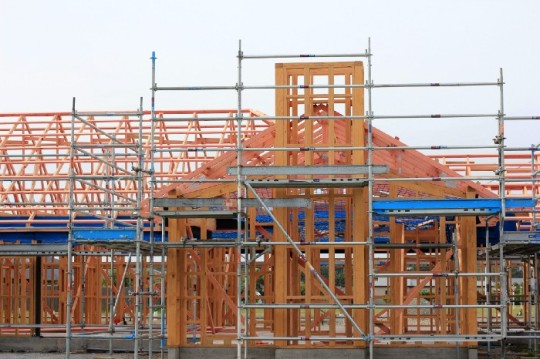
Ein Hausbau hat es in sich, weiß man bei der Clemens Planung + Baubetreuung GmbH. Deswegen wird hier die Nähe zum Kunden großgeschrieben. Eine umfassende und kompetente Betreuung vom ersten Entwurf bis zum fertigen Haus kann dabei bares Geld sparen und Nerven schonen.
Bei der Clemens Planung + Baubetreuung GmbH weiß man: jedes Bauvorhaben hat seine Tücken, und ist immer wieder eine Herausforderung. Als Bauherr ist es daher unbedingt empfehlenswert, sich nicht darauf zu verlassen, dass alles schon irgendwie funktionierten wird — mit einem kompetenten Planungs- und Baubetreuungspartner an seiner Seite spart er nicht nur Zeit und Geld, er schont auch seine eigenen Nerven. Obendrein kann er sich sicher sein, dass jeder einzelne Schritt des Bauvorhabens professionell geplant und überwacht wird, so dass kleine oder große Katastrophen von vorneherein verhindert werden. Clemens Planung + Baubetreuung bietet eine umfassende undvkompetente Beratung von der Idee bis zum fertigen Haus.
EIN HAUS BAUEN — DER ERSTE SCHRITT
Bei jedem Bauvorhaben gilt es zunächst, die wichtigsten grundsätzlichen Fragen zu klären. Was für ein Budget ist vorhanden? Welche maximale Monatsrate kann getilgt werden? Die Clemens Planung + Baubetreuung hilft dem Bauherrn bei der Beantragung von Fördermitteln wie beispielsweise bei der Kreditanstalt für Wiederaufbau (KfW) und eruiert, ob noch weitere Förderprogramme für das Bauvorhaben in Frage kommen. Des Weiteren hilft der persönliche Ansprechpartner der Clemens Planung + Baubetreuung bei der Suche nach dem perfekten Baugrundstück, soweit dieses noch nicht vorhanden ist und hilft dabei, den richtigen Haustyp auszuwählen. Ob Passivhaus, Fertighaus oder Massivhaus, jeder Haustyp hat Vor- und Nachteile, die es abzuwägen gilt.
DIE BAUPLANUNG MIT CLEMENS PLANUNG
Das Team der Clemens Planung + Baubetreuung ist also bereits im Vorfeld der Planung für den Kunden da, doch im nächsten Schritt beginnt die eigentliche Bauplanung. Zunächst die Clemens Planung + Baubetreuung notwendige Informationen über den Baugrund ein und die Genehmigungsfähigkeit des Bauvorhabens wird eingehend geprüft. Ein erster grober Entwurf mit Grundriss- und Ansichtsskizzen des Hauses wird erstellt, Kosten werden grob überschlagen. Die konkrete Planung erfolgt, sobald der Baukredit zugesagt ist. Am Ende dieser Phase steht ein realisierbares Konzept, welches die Clemens Planung + Baubetreuung in enger Zusammenarbeit mit dem Bauherrn erstellt. Anträge und Genehmigungen für den Bau werden eingeholt und die Ausführung geplant. Die Clemens Planung + Baubetreuung verfügt dabei über ein großes Netzwerk und kann kompetente Gewerke ansprechen und beauftragen.
WIE LANGE DAUERT DIE PLANUNGSPHASE?
Es gibt im Vorfeld des Hausbaus viel zu tun — die Erfahrung zeigt, dass die Planung eines Hausbaus im Durchschnitt etwa acht Monate benötigt. Dabei ist die konkrete Bauplanung selbst meistens nicht der entscheidende Zeitfaktor, denn für diese veranschlagt die Clemens Planung + Baubetreuung nur etwa vier Monate, doch dauert allein die behördliche Bearbeitung des Bauantrags weitere vier Monate, die es in jedem Fall immer mit einzuplanen gilt.
WIEVIEL ZEIT MUSS MAN FÜR DEN BAU EINPLANEN?
Soll beispielsweise ein Einfamilienhaus in massiver Bauweise errichtet werden, so ist mit einer Gesamtbauzeit von etwa 17 bis 20 Monaten zu rechnen. Die Clemens Planung + Baubetreuung veranschlagt hierbei
• für die Planungsphase inklusive Bearbeitung des Bauantrags: 8 Monate
• für die Rohbauphase: 1 bis 2 Monate
• für die Innenausbauphase: 6 bis 8 Monate
• für geringe Eigenleistungen: 1 Monat
• zur Vorbereitung und Durchführung des Umzugs: 1 Monat
Zu beachten ist hierbei, dass Fertighäuser bereits nach drei bis vier Monaten bezugsfertig sein können. Eine Verschiebung des Zeitplans ist allerdings oft der Fall, beispielsweise aus Wettergründen, wenn Lieferengpässe entstehen oder Eigenleistungen mehr Zeit benötigen als zunächst erwartet. Bei der Clemens Planung + Baubetreuung wird in der Planung daher immer ein mehrmonatiger Zeitpuffer veranschlagt.
WIE SIEHT EINE PROFESSIONELLE BAUBETREUUNG AUS?
Die Baubetreuung der Clemens Planung + Baubetreuung GmbH beinhaltet einen technischen und einen wirtschaftlichen Teil, wobei beide Bereiche ineinander übergehen. Die technische Betreuung der Clemens Planung + Baubetreuung beinhaltet das Einholen aller erforderlichen Genehmigungen, die Beauftragung, Verteilung und Überwachung aller benötigten Gewerke, die Begleitung der Gebäudeabnahme und aller Behördengänge und -abnahmen. Beim Auftreten von Problemen fordert die Clemens Planung + Baubetreuung im Auftrag des Bauherrn Gewährleistungen ein. Zum wirtschaftlichen Aufgabenbereich der Clemens Planung + Baubetreuung GmbH gehören die Unterstützung bei der finanziellen Projektplanung, die Berechnung der Wirtschaftlichkeit bei Bauvorhaben mit Vermietungsabsicht, die Prüfung steuerlicher Vorteile, die Beantragung von Fördergeldern und Preisverhandlungen und Zahlungsabwicklungen mit der Baufirma und den Liederanten.
WAS UNTERSCHEIDET BAUBETREUUNG VON BAUBERATUNG?
Die Clemens Planung + Baubetreuung GmbH koordiniert und überwacht die gesamte Ausführung des Bauvorhabens. Ein Bauberater hingegen würde sich ausschließlich auf die gemeinsame Projektplanung mit dem Bauherren beschränken. Da sich die Aufgabengebiete von Baubetreuern und Bauberatern in vielerlei Hinsicht überschneiden und oft so ineinander übergehen, dass eine Trennung beider Bereiche unmöglich wird, bietet die Clemens Planung + Baubetreuung neben der kompetenten Planung des Bauvorhabens auch eine ebenso professionelle Betreuung bei dessen Umsetzung, so dass der Bauherr sich von der ersten Idee bis zum fertigen Haus stets auf seinen fachkundigen Partner verlassen kann.
WER BENÖTIGT EINE BAUBETREUUNG?
Eine Baubetreuung bietet sich für jeden an, der ein Bauvorhaben umsetzen will. Die Clemens Planung + Baubetreuung GmbH koordiniert Bauprojekte professionell und umfassend. Das Wissen und die Erfahrung der Experten kann massiv Zeit, Geld und Nerven sparen, denn durch eine professionelle Bauberatung können ärgerliche und kostspielige Nachbesserungen, Reparaturen und allzu frühe Instandsetzungen vermieden werden. Eine kompetente Baubetreuung kann insofern für jedes Bauvorhaben ein wichtiger Faktor sein.
WELCHE RISIKEN BESTEHEN BEIM VERZICHT AUF EINE BAUBETREUUNG?
An der Baubetreuung sollte beim Hausbau nicht gespart werden, denn dies würde ein bewusst eingegangenes Risiko hinsichtlich Bausubstanz und Bauqualität bedeuten. Oftmals werden Baumängel erst nach einiger Zeit wirklich sichtbar, ein Bausachverständiger muss bestellt werden, um die Ursachen zu prüfen — und nicht selten entsteht ein langwieriger Streit darüber, wer die Kosten für die Beseitigung der Mängel zu tragen hat. Neben dem Ärger und dem Aufwand, der in diesen Fällen betrieben werden muss, ist allein das Einschalten eines Bausachverständigen ein nicht zu verachtender Kostenaufwand. Die professionelle Betreuung der Clemens Planung + Baubetreuung GmbH hilft dabei, solche Baumängel im Vorfeld zu vermeiden, so dass dem Bauherrn ein derartiger Ärger und weitere Kosten erspart bleiben können.
0 notes
Note
What are your least favourite Marx books? Which ones are the worst?
this is sorta tricky because i guess you’d have to define “books” since
many of his most famous writings are tiny pamphlets or speeches which were then published as articles or pamphlets and might not properly be considered “books”, especially since some of them were only published posthumously as texts once transcripts were found for speeches. value price and profit would be the go-to example for this.
a lot of the “books” we now have are really just editorial collages of manuscripts that were not written in the format of a “book” and were in many cases not even intended to be published. so when we try to measure their worth in how Good they are or not, sometimes the “book” we’re talking about doesn’t really exist or is constructed/“finished” (often poorly) from the raw manuscript(s). great example would be the economic manuscripts of 1864-5 which were then turned into volume 3 of capital, but the debate around the nature of engels’ job as editor means that the “book” capital volume 3 is considered by many to be inferior to the unadulterated manuscripts, if not an outright distortion of them.
but if we can sorta treat all the published texts as “books” (excluding like, individual articles unless they are noteworthy enough to single out. if they’ve been published as a pamphlet and are considered Important Texts i’ll consider them here) and ignore the fact that marx was an extremely prolific writer (meaning that there’s a lot that i haven’t read), id largely come down on the younger marx.
i think pieces like the communist manifesto, paris manuscripts, wage labor and capital, etc are relatively intellectually immature compared to his later works. a lot of what’s in them had to be corrected or outright abandoned by the 1860s. there’s also the problem where the paris manuscripts suffer from the 2nd problem listed above where they are mishmashed together in such a way that they appear inconsistent and where the actual process of inquiry gets lost in the rearranging of pieces of text. for example, the piece we read at the beginning as the “preface”, but which was actually from the third manuscript and was pulled to the front by editors, shows an attempt by editors to “finish” what marx apparently would’ve done himself, despite the fact that the manuscripts were from marxs personal notebooks and for his own development/clarification as he studied, not manuscripts for a “book”. this seemingly minor change reflects the overall editorial attitude to the publication of the manuscripts. a more apparent alteration is in the last “manuscript” regarding the critique of hegelian philosophy, which was never written by marx. it is an “essay” compiled from paragraphs and stray remarks throughout the paris notebooks, put together in a semi-coherent order so that it could stand as a single text (the same thing happened with the first “chapter” of “the german ideology”). when editors are this bold, it is hard to distinguish the good/bad of marxs work from the heavy hands of editors.
the same is true of wage labor and capital, which was republished by engels after marxs death with numerous “corrections”, especially around the category of “labor-power” which marx developed in the late 1850s, about a decade after WLC was written. the result is that engels decided to publish “not as Marx wrote it in 1849, but approximately as Marx would have written it in 1891,” which ignores the fact that merely changing “labor” to “labor-power” everywhere in the text that mentions its sale as a commodity doesn’t magically bring it to some hypothetical peak. marxs theoretical foundations between 1849 and 1867 (not to mention 8 years after his death in 1891!!) were radically different, meaning that the updating of a single category doesn’t resolve the problems of the text. here again, the editor plays a heavy role in the reception of the text (if you’ve read WLC, you almost certainly read the 1891 edition with engels’ editing), but also the theoretical foundations themselves are inadequate and were jettisoned in a matter of years.
the communist manifesto comes from this era of marxs thought as well and suffers from the same problems, although marx and engels treated the text as a kind of “historical document” which shouldn’t be altered, displacing the explicit “corrections” to the prefaces of later editions. regardless, its fame as The text of communism means that it becomes the go-to text for encountering and combatting communism. this is why it’s taught in high school classrooms and why jordan peterson thought it was enough to simply deal with the manifesto (beyond the fact that he’d obviously never read anything else by marx) as if it was the final word on communism. it isn’t, and the text has many problems that it’s authors pointed to, but also several which are only ever made implicitly in other texts, as the theoretical foundations are constantly being placed under scrutiny and changed. in the manifesto, he is largely uncritical of political economy’s categories, adhering to a malthusian conception of wages and a naïve theory of crises.
but there’s another issue, which isn’t wholly unrelated here, regarding the esoteric/exoteric dimensions of marxs writings which aren’t really grappled with until the 1970s by the neue marx-lektüre, concerning the ways in which marx would often write in “popularized” fashion, resulting in a kind of theoretical “dumbing down” of the concepts. he was extremely aware of the need to make himself understandable and even rewrote the beginning of capital several times in order to escape the same fate of the 1859 contribution which did poorly, in large part due to the fact that most people didn’t really understand it and those that did weren’t the people he was trying to reach.
the problem is that this often led to simplification rather than clarification, crudifying the analysis and turning it into something else which meant, at the end of the day, he was still misunderstood. this problem exists in many of his texts (even my favorites), meaning that some of his pieces, especially those which are often more explicitly political, become somewhat contradictory when compared to his private notebooks at the time. another serious and related issue here is the political censorship he faced at the time, which likely had a lot more to do with the way he expressed himself in published texts than we typically think. in my view, both of these things together help explain bernstein’s identification of a reformist tendency in the later marx, which was combatted by equally bad readings of traditional “exoteric” marxisms.
anyway, this is less a list of my least favorite marx books and more of a marxological wash of problems with making lists like this in the first place. it’s often hard to distinguish between marx and his editors, but also he was constantly developing and self-criticizing older conceptions, meaning that his “worst” books for me come from periods/texts where he isn’t on very firm footing (basically everything he wrong up to the grundrisse as far as i’m concerned), but excluding some of the texts which i think are actually quite strong despite their editorial weaknesses. my interest, then, is in understanding his intellectual development and bringing context to some of his later positions. that makes even the worst texts really important, even if i don’t find them adequate, which is sorta the point since he didn’t either.
88 notes
·
View notes
Text
Grundrisse
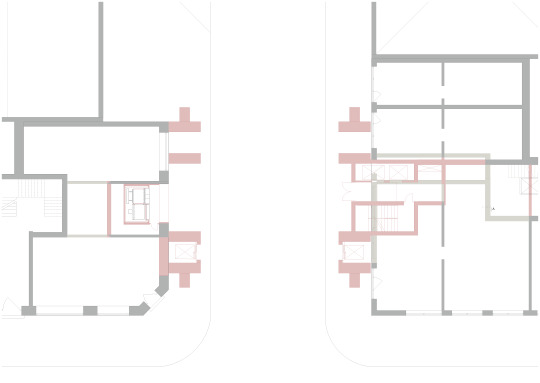
EG
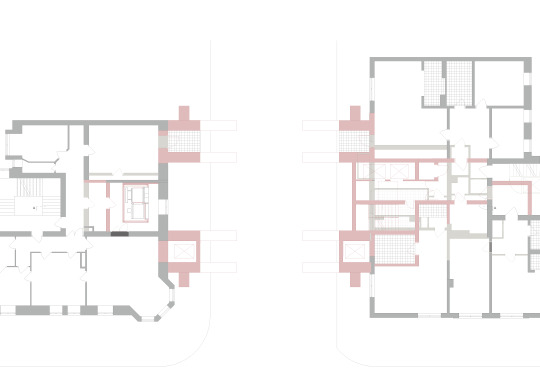
Regelgeschoss | 1. - 5. OG

Sesselliftstation | 6.OG
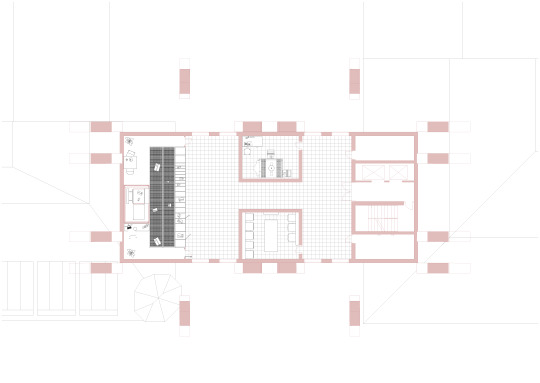
Verteiler | 8.OG
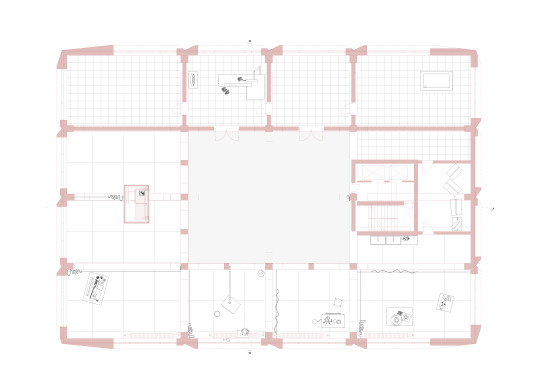
Atelier | Werkstatt | 9.OG
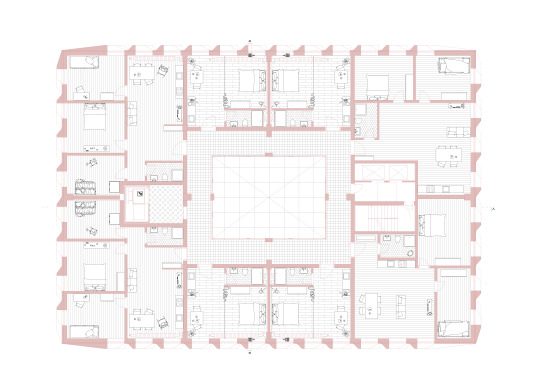
Wohnen | 11.OG
1 note
·
View note